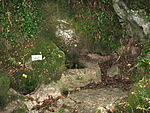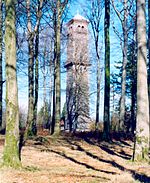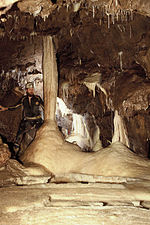Moon's Hill Quarry
Geology of SomersetQuarries in the Mendip HillsSites of Special Scientific Interest in SomersetSites of Special Scientific Interest notified in 1996Use British English from February 2023
Moon's Hill Quarry (grid reference ST665460) is a 3.42 hectare geological Site of Special Scientific Interest at Stoke St Michael in Somerset, notified in 1996 and is a Geological Conservation Review site. The quarry covers some 240 acres (0.97 km2), and is operated by John Wainwright & Co Ltd which purchased it in 1897 and has operated it continuously ever since. The quarry produces Basalt Aggregate known as hardstone and is used for the surface course, the top layer of the road surface.
Excerpt from the Wikipedia article Moon's Hill Quarry (License: CC BY-SA 3.0, Authors).Moon's Hill Quarry
Burge's Lane, Mendip Stoke St Michael
Geographical coordinates (GPS) Address Nearby Places Show on map
Geographical coordinates (GPS)
| Latitude | Longitude |
|---|---|
| N 51.21221 ° | E -2.48097 ° |
Address
Burge's Lane
Burge's Lane
BA3 5TJ Mendip, Stoke St Michael
England, United Kingdom
Open on Google Maps







